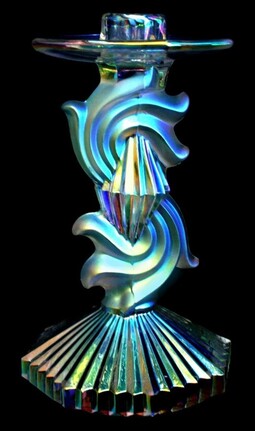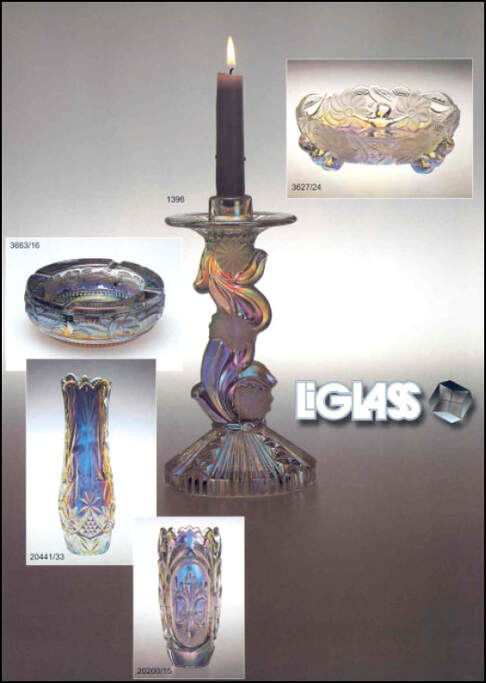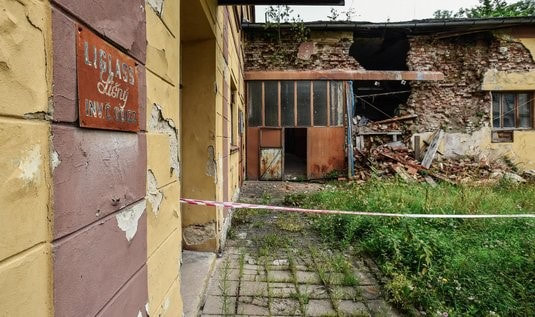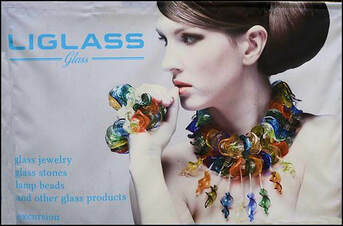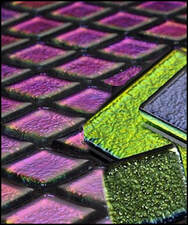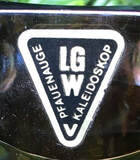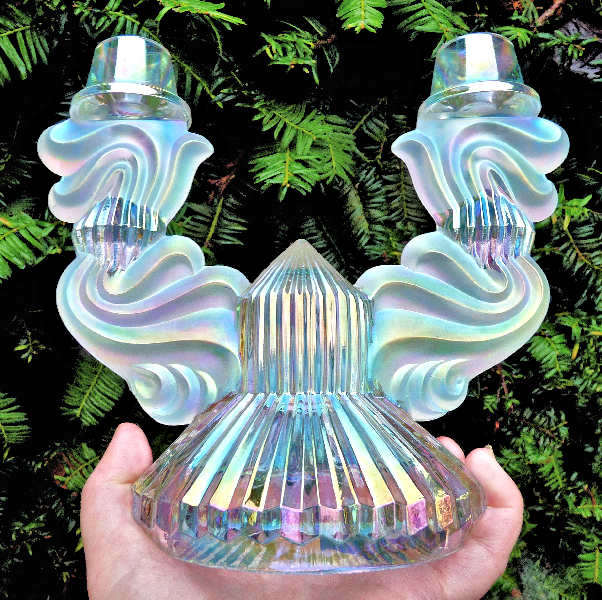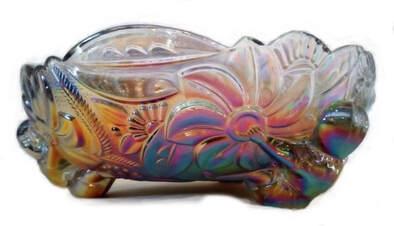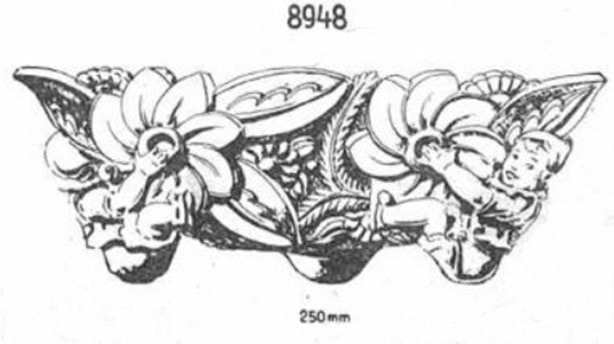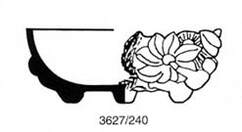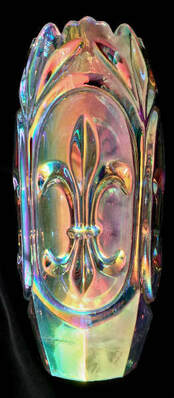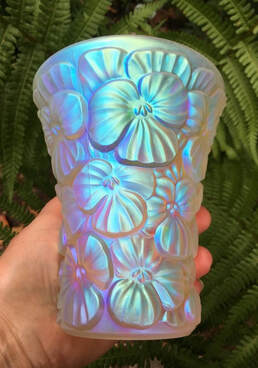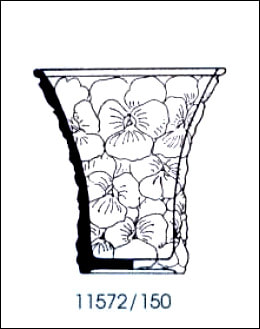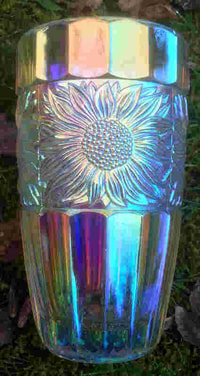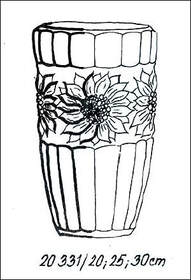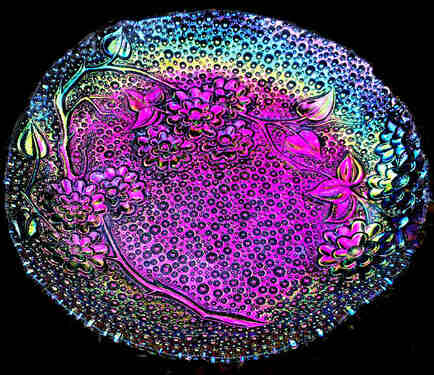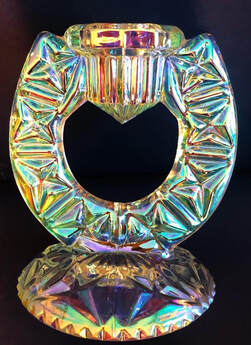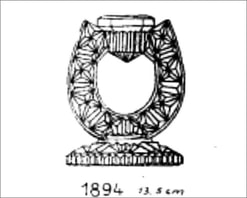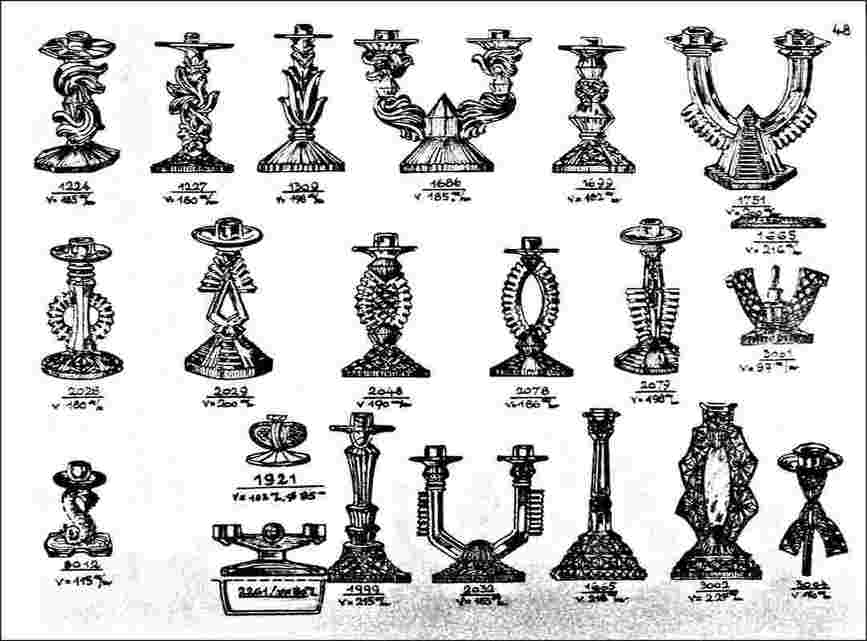LiGlass
|
G&S Thistlewood, February 2021
|
The cover of this 1990s brochure offers both an astonishing revelation and also an answer to many questions.
Hidden in plain sight for almost two decades, in late January, 2021, a small image in an old document was brought to our attention by glass researcher, Dieter Neumann – it is the illustration you see below on the right *. We have enlarged it and you can see it here clearly.
Hidden in plain sight for almost two decades, in late January, 2021, a small image in an old document was brought to our attention by glass researcher, Dieter Neumann – it is the illustration you see below on the right *. We have enlarged it and you can see it here clearly.
|
No further information about the maker was presented with it, and so we immediately set to work to discover more. The candlestick in the illustration grabbed our attention first. We know it as “Sublime Beauty” made by the Czech glassmaker Libochovice. In 2006 we corresponded with Libochovice, just before they closed, and enquired about the iridescent examples of this candlestick and two others (Sublime Deco single and double sticks). We were told that production was c. 1936-38 and we believed they had been iridised then too. However, in our 2019 further research on Sublime Deco we explained that recent discoveries had made us question that early date and that we suspected they had been iridised more recently, probably using a form of (cold) vacuum iridising, in the style of the LGW process. And it turns out we were correct. Sublime Deco candlestick made by Libochovice. Discover how the iridescence was added in the explanation below.
|
Cover of a LiGlass brochure from c. 1990s.
|
|
On the cover of the LiGlass brochure we see a variety of items with the same amazing shimmery pastel iridescence that we are familiar with on the Sublime Deco candlesticks and various Sklo Union vases. So, how did LiGlass iridise them? And what do we know about this company? Read on … LiGlass – the Background LiGlass operated at a factory in the village of Líšný near Železný Brod in the Czech Republic from the 1990s until c. 2015 or 2016. They had split off from the Železný Brod glassworks in 1990 and formed their own joint stock company. The Líšný premises they worked out of was a re-modelled textile factory **. It is difficult to get clear, current information about the firm, which appears to be listed as a trading and investment company (since 2003), a property letting firm or a furniture sales outlet. The LiGlass premises appear on a Google map search, however a birds-eye satellite view appears to indicate that the works are completely derelict in parts. Sources suggest bankruptcy and curiously, problematic investment in the construction of hydro-electric dams is even mentioned. The Aktualne.cz website has a series of photos showing what is left of LiGlass. |
The sign “LiGlass” is still visible on the wall, while the buildings
around are clearly crumbling and derelict. Source ctk. |
|
The notes to the photos explain that 1200 people worked there when the factory was at its height, with glass chandeliers being one of the main worldwide exports. “Parts of the buildings are destroyed, dilapidated … the machines that used to be here are gone” are quotes from the captions to the photos on the Aktualne news website. Negotiating the web archives, we were able to unearth more relevant information that assists with understanding LiGlass’ history. The company was described as producing “decorative glass, glass vases, decorative glass candlesticks, restaurant glass, glass products and glass Christmas decorations” as well as chandeliers and jewelry, glass tiles and architectural glass bricks. |
LiGlass ad for their glass jewellery.
|
Iridescent glass tiles by LiGlass.
|
|
One particular speciality, according to their archived website, was “vacuum coating (ennoblement) surfaces” – in other words, vacuum iridising, exactly like that done by LGW (Leinauer Glaswaren). It was described elsewhere as “surface treatment of glass”. Further descriptions explained that they used “a space age vacuum technology to apply extremely thin and brilliant metallic surfaces to glass” using titanium and magnesium, amongst other metals. Yes, LiGlass were iridising glassware, applying shimmering beauty through the vacuum method. Piecing it all together, it appears that LiGlass bought in glass items from various Sklo Union and other glass companies, in particular from Libochovice. They then vacuum iridised them (a cold application). We have observed two different iridescent appearances – both can be seen on the brochure above. The glorious, shimmering, white-blue effect and also a darker, often purplish effect that is similar to that done by LGW. In fact, it is very likely that some of the examples we earlier thought were LGW in Germany, from the 1980s, were actually vacuum iridised by LiGlass at Zelezny Brod in the Czech Republic, in the 1990s and possibly later. The significance and importance of a label is made clear.
We are not aware of any labels on LiGlass pieces.
|
Our Sublime Deco Double Candlestick.
Made by Libochovice and vacuum iridised by LiGlass. |
Identifying the glass shown on the LiGlass brochure (at the top of this webpage). The numbers shown alongside the glass items on the LiGlass brochure cover are interesting and helpful.
1396 candlestick - Sublime Beauty (pictured above) is shown in Libochovice catalogues from the late 1990s and early 200s, with this exact number.
3663 ashtray - unsure, although the number suggests Libochovice.
20441 vase - the number suggests Hermanova Hut, but we don’t know the pattern name.
3663 ashtray - unsure, although the number suggests Libochovice.
20441 vase - the number suggests Hermanova Hut, but we don’t know the pattern name.
|
3627 bowl - Cherubs. This was originally a Reich item. It was reproduced by Libochovice and appears in their catalogues from the late 1990s and early 2000s, with this same item number (3627). We have seen this piece in the light shimmering iridescence and also in the deeper, vibrant purple iridescence. Left: Reich’s original Cherubs bowl, c. 1934.
Right: the Libochovice/LiGlass bowl. Note it's lack of detail compared to the Reich original, especially on the child’s face. |
20200 vase - Fleur de Lys Hermanova Hut number.
The original was an Inwald item (OMN Sigurd), and it was re-issued by Hermanova Hut, c 1990s. The old Classic version in marigold was made by Inwald around a century ago. We have compared the Inwald vase with the one shown here and they are identical, suggesting that
Hermanova Hut used the original mould. |
More pieces vacuum iridised by LiGlass.
|
Above: extract from a Rosice catalogue showing pattern #1894 / Dolores, courtesy of our friend, the late Marcus Newhall.
Left: Dolores candlestick made by Rosice. Vacuum iridised by LiGlass.
|
We were sent information about this candlestick by Sandy Sage in June 2022. There is a fascinating story to its name, "Dolores". Here is what Sandy told us about it:
"I [Sandy] have an affinity for Czech carnival glass because my mother’s family is from Czechoslovakia, but I didn’t know until a few months later that this candlestick (bought from the Czech Republic in 2019) might also have a purpose as a remembrance to a special collector. My mother-in-law, fellow carnival glass collector and mentor, Dolores Sage, had passed away on July 4, 2018. Dolores loved and promoted carnival glass and she was honored to be the recipient of prestigious awards from two Carnival Clubs in the USA. Dolores also founded a Carnival Glass club for young collectors. Because of her contributions to Carnival Glass, I decided to name this pattern 'Dolores' in her honor." |
Shown below is a page from a Libochovice catalogue (c. 1930s-1950s) also courtesy of the late Marcus Newhall. Many of these items were also made in the later years of Libochovice, right up to c. 2006, and several of these candlesticks are known with the typical shimmering LiGlass iridescence.
There is more information on our website, here:
Collectors Facts: Sublime Deco
Sklo Union: Vases
* This brochure cover appeared in Pressglas Korrespondenz 2003, courtesy Siegmar Geiselberger
** A Guide to Czech and Slovak Glass, Diane Foulds. 1995
